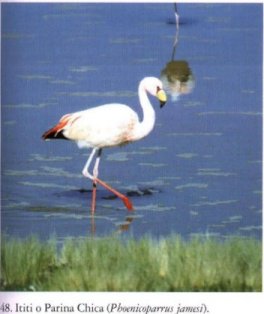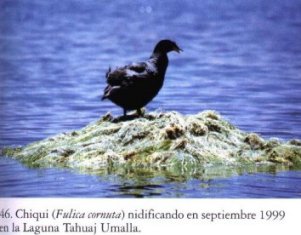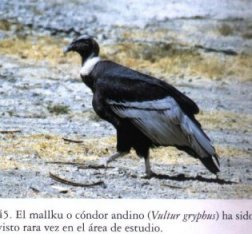Bolivia completes Ramsar SGF project on Lake Poopó
News from the SGF

Bolivia completes SGF 1998 project "Evaluation of the current status of Lake Poopó for its designation as a Ramsar site and the establishment of a Wise Use and Integrated Management Area"
The Ramsar Bureau is pleased to announce the completion of project "Evaluation of the current status of Lake Poopó for its designation as a Ramsar site and the establishment of a Wise Use and Integrated Management Area", submitted to the SGF 1998 cycle by Mr. Omar Rocha, of the World Conservation Society (WCS)-Bolivia (and national STRP focal point). The project received a total of 34,780 CHF in funding.
 Lake Poopó and Lake Uru Uru comprise the second most important endorrheic system in the Bolivian altiplano (after Lake Titicaca) due to both their unique biotic and abiotic characteristics and their large surface area (3,084 km2). The lakes are also of great importance in the conservation of several waterbirds, some of them endemic like the Andean flamingo (Phoenicoparrus andinus) and James' flamingo (P.jamesi) and some endangered like the horned coot (Fulica cornuta).
Lake Poopó and Lake Uru Uru comprise the second most important endorrheic system in the Bolivian altiplano (after Lake Titicaca) due to both their unique biotic and abiotic characteristics and their large surface area (3,084 km2). The lakes are also of great importance in the conservation of several waterbirds, some of them endemic like the Andean flamingo (Phoenicoparrus andinus) and James' flamingo (P.jamesi) and some endangered like the horned coot (Fulica cornuta).
The original settlers of the area belong mostly to the Uru Muratos ethnic group. This group, highly dependent on fisheries, is one of the most ancient in Bolivia. Unfortunately, it is also one with the most urgent socioeconomic needs, which is partly why their involvement in the future management of the lakes is seen as a crucial factor for their conservation.
The Small Grants Fund project set out to analyze various social, cultural and ecologic factors related to the lake. Once compiled, the information was used to identify past alterations suffered by the wetland, as well as the pressure points. The result of the compilation was the publication "Diagnóstico de los recursos naturales y culturales de los lagos Poopó y Uru Uru, Oruro - Bolivia, para su nominación como Sitio Ramsar" (Diagnosis of the natural and cultural resources of lakes Poopó and Uru Uru, Oruro - Bolivia, for its nomination as a Ramsar site). The publication was specifically developed to address the most relevant issues for the wetland, in direct relation to a possible future Ramsar site designation. Some of its main topics include: fauna and flora of the site; its use by local populations; its limnology; socio-cultural activities of local peoples; evaluation of mining activities in the area; and, evaluation of potential for tourism activities. The publication provided invaluable information for the Ramsar Information Sheet and the subsequent site designation (which ensued on July 11, 2002), yet it declared itself that the designation is only the first step to be taken on the road to the conservation and wise use of the wetland. The information generated by this project certainly provides a strong foundation for elaborating concrete actions for conservation of the ecosystem while finding alternatives for the development of the Uru Muratos communities.
 |  |